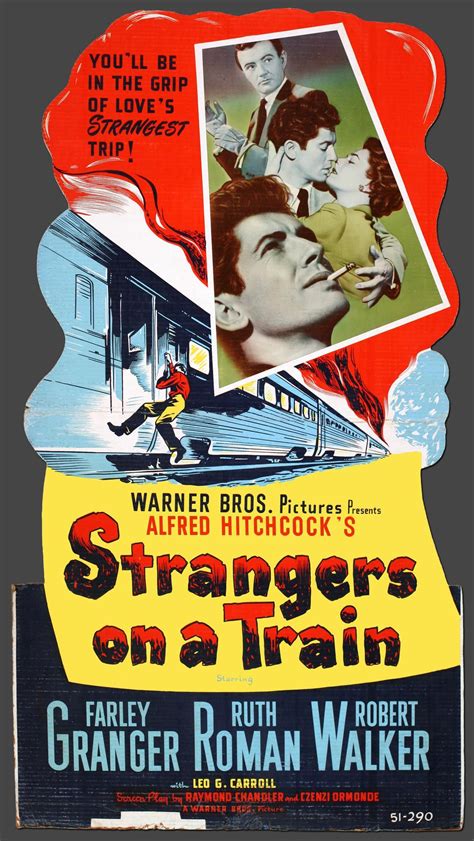Strangers on a Train

Description:
Strangers on a Train is a classic thriller directed by Alfred Hitchcock. The film revolves around a chance encounter between two men on a train: the charming but psychopathic Bruno and the tennis player Guy. Bruno proposes an unthinkable scheme to swap murders, believing it to be the perfect crime. As the tension escalates, Guy finds himself trapped in a web of deceit and danger. The film is renowned for its suspenseful narrative and Hitchcock's masterful direction.Keywords:
Train Setting, Thriller, Crime, Psychological, Suspense, NoirWhat is the famous line from Strangers on a Train?
In Alfred Hitchcock's "Strangers on a Train," one of the most famous lines is when the character Guy Haines says, "I don't want to be a part of this." This line encapsulates the central theme of the film, highlighting the tension and moral dilemmas faced by the characters. The movie revolves around a chance meeting between two men who discuss swapping murders, leading to a suspenseful exploration of guilt and the consequences of their actions.
Is Strangers on a Train worth watching?
"Strangers on a Train," directed by Alfred Hitchcock and released in 1951, is widely regarded as a classic thriller. The film explores themes of duality and moral ambiguity through the story of two men who meet on a train and discuss a hypothetical murder swap. With its suspenseful plot, strong performances—especially by Farley Granger and Robert Walker—and Hitchcock's masterful direction, it remains influential in the thriller genre. If you appreciate psychological tension and classic filmmaking, it is definitely worth watching.
What happens at the end of Strangers on a Train?
At the end of "Strangers on a Train," Guy Haines confronts the antagonist, Bruno Antony, who has been trying to manipulate him into committing murder. In a climactic showdown at an amusement park, Guy fights Bruno, who has been attempting to frame him for a murder he committed. The struggle culminates on a carousel, where Bruno is ultimately killed. Guy is cleared of suspicion, but the traumatic events leave a lasting impact on him. The film concludes with Guy walking away, reflecting on the harrowing experience.
What does the lighter represent in Strangers on a Train?
In "Strangers on a Train," the lighter symbolizes the connection between the two main characters, Guy and Bruno. It serves as a physical representation of their fateful encounter and the dark pact Bruno proposes. The lighter, with its engraved initials, becomes a reminder of Bruno's obsession and the guilt that Guy carries throughout the film. As the story unfolds, the lighter embodies the theme of duality and the idea of fate, highlighting how one moment can irrevocably alter the course of their lives.
Explore More Categories:
Monochrome Growing Up Consumerism Emotional Intensity Individualism Gore Youth Culture Arthouse Docudrama Mutant Northern Ireland Psychological Manipulation Radiation Pain Motherhood Claustrophobia Buddy Comedy Harassment Character Driven Drama Family Dynamics Truth Meltdown Independent Film Underworld Environmental Collapse